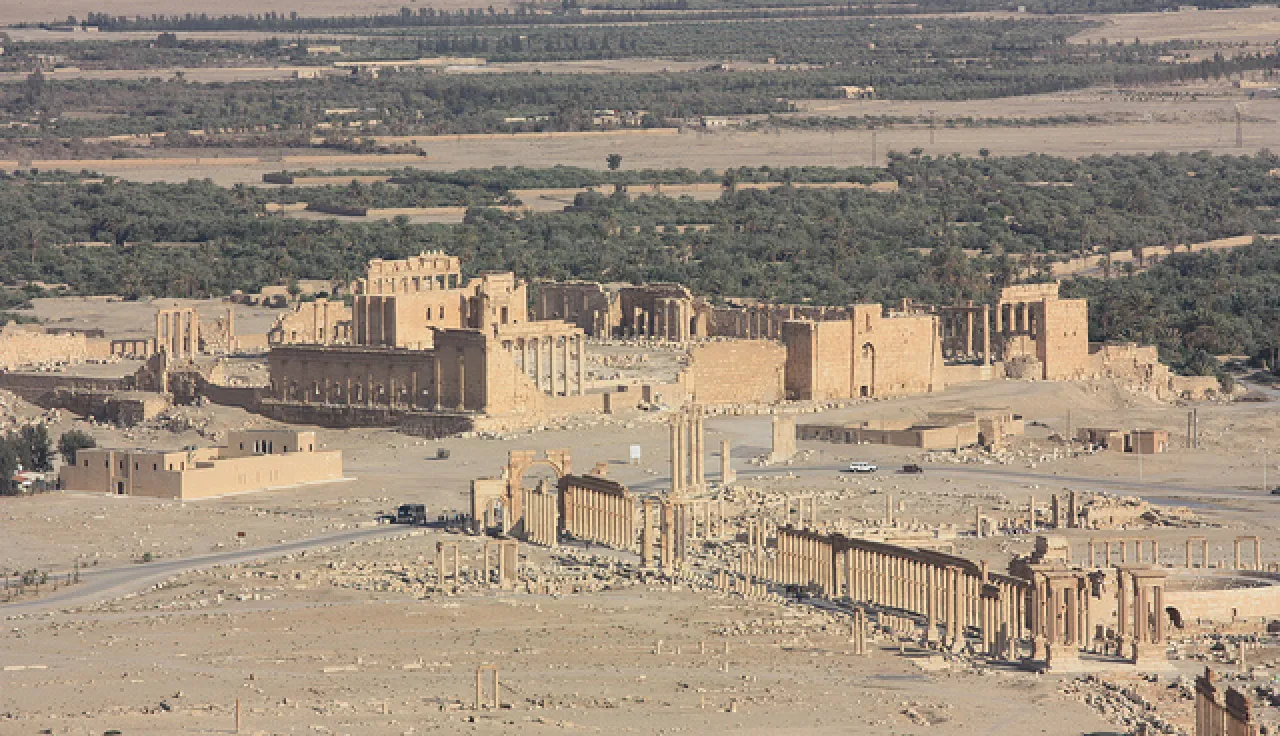Martens Readings 2017 2/2: protection of cultural heritage during armed conflict

The continued wanton and needless destruction of cultural property during armed conflicts remains a pressing concern, particularly in the context of modern urban warfare. The issue was one of the main topics of discussion during the annual Martens Readings conference on international humanitarian law, held on 31 May–2 June 2017 in St. Petersburg. The event was organized by the ICRC, the law faculty of St. Petersburg State University and the Russian Association of International Law. The State Hermitage Museum's Staraya Derevnya Restoration and Storage Centre, an outstanding example of contemporary efforts to preserve and restore objects of high cultural value, provided a fitting venue.
Sadly, cultural property continues to suffer damage, destruction and looting in today's armed conflicts. States and international organizations must take decisive action to prevent this irremediable loss of the world's cultural heritage, and remind all concerned of their obligation to respect international and customary law rules governing its protection.
The adoption of international norms to protect cultural property in armed conflict is a relatively recent development. The first international treaty focusing exclusively on this subject was the Hague Convention of 1954. Together with its two Protocols of 1954 and 1999, the Convention provides for a number of measures to protect important cultural property from the ravages of war: peacetime preparation; protection during military operations; an export ban on cultural property from occupied territory, and its immediate return when hostilities are over; and criminal prosecution in case of violations. The prohibition of any acts of hostility against historic monuments and works of art is also set down in the 1977 Additional Protocols to the 1949 Geneva Conventions.
Regarding the effectiveness of these norms, some experts at the conference referred to a recent example: the decision of the International Criminal Court in 2016 in the Al Mahdi case. Ahmad Al Faqi Al Mahdi, an alleged member of an armed group operating in Mali, was found guilty of the war crime of intentionally directing attacks against religious and historic buildings in Timbuktu and sentenced to nine years' imprisonment. Unfortunately, such prosecutions are still rare.
Tural Mustafayev of UNESCO's Cultural Protection Treaties Section said that he was "convinced that international law provides adequate legal protection for cultural property". However, he went on, "the application of these norms during armed conflicts and the effective prosecution of those who violate them remain serious concerns that have not yet been properly addressed".
During the Second World War, enormous, often irreparable, damage was caused to the world's cultural heritage. One such example can be found just outside St. Petersburg, in Tsarskoye Selo, former residence of the Russian monarchs. Restoration of the parks and palaces here has been going on for decades: the recreation of the Amber Room in the Catherine Palace, for instance, took 20 years.
Natalia Korshunova, head of the research library of the Tsarskoye Selo State Museum-Preserve, paid tribute to this painstaking work: "Confronted by the charred ruins of suburban palaces, some might have been too daunted by the huge task of restoration, but it was nonetheless the first national matter to which returning soldiers enthusiastically contributed."
A recent example of the deliberate and systematic destruction of cultural property took place in Syria's ancient city of Palmyra. According to Natalia Solovyova, deputy director of the Institute of the History of Material Culture of the Russian Academy of Sciences, some of the monuments, such as the Temple of Bel, may never be restored, but there is hope for other monuments. To aid this process, a digital 3D model of Palmyra has been created using modern technologies. Ms Solovyova explained that they had asked for an aerial survey to record the current state of some monuments before the international community could discuss their restoration. In parallel, in an interesting crowdsourcing initiative, scientists have developed a special website where anyone who visited Palmyra before the hostilities can upload photographs they took of its historic monuments, from which virtual models can then be created to guide the restorers.
While crimes against cultural objects in wartime are not comparable in their severity with the human suffering caused by crimes against the civilian population, we should not underestimate the value of our shared cultural heritage. It is important, therefore, to keep the spotlight on this important issue and to continue to work to ensure cultural property will be better protected in the future.
The original Russian version of this page can be found here.



